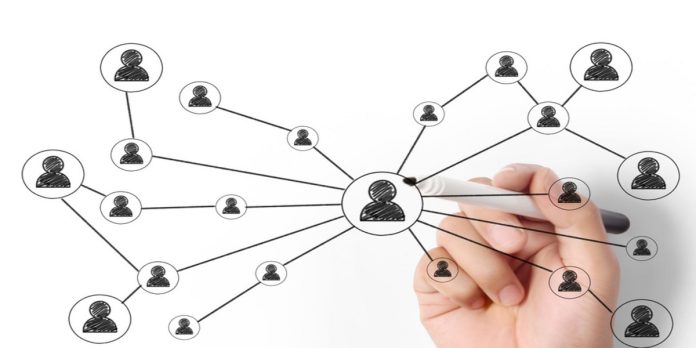Meaning of data linkage
Data linkage is an exercise of collating data from multiple sources about a particular entity at one place. This exercise generates a completely new data about that particular entity.
The benefit of this newly generated data about that particular entity is that it is more comprehensive, organized, scientific, rational, and logical. Besides, it can be arranged as per any preferred criterion of any analysis or reporting about that particular entity.
Aim of data linkage
The aim of data linkage is to collate data about a particular entity at one place from multiple sources.
These entities can range from an individual, place, company, country, performance over various indices or parameters, per capita income, national income of different countries, criminal records of an individual, tax paid by different companies, prevalence of any disease across different countries or in a community, etc.
The sources of information about these entities can range from research papers, books, magazines, government’s statistical data such as census, surveys, and reports published on various media platforms such as print, electronic, digital, etc.
What the collation of data from multiple sources at one place intends to achieve?
Once the data about a particular entity from multiple sources is collated at one place, it provides a completely new data about that entity.
This arrangement of data brings to fore new analyses about any entity. It makes the understanding about it more lucid and logical. Many a times, it brings to conclusion hitherto unexplored aspects or dimensions about that particular entity.
Approaches to data linkage
There are four approaches to data linkage. They are as follows:
First, clerical approach. In this approach, each record that matches with the concerned entity is entered manually. Since matching and entering of data is done manually, it is a very difficult and time-taking process.
Second, deterministic approach. It is also called rule-based approach. In this approach, attributes for a given record pair is matched according to some rule. All records that satisfy that rule are compiled to generate a new data.
Third, probabilistic approach. It is also called score-based approach. In this approach, the probability of matching of a record pair as per a fixed rule is calculated. Based on this, whichever record satisfies the rule is collated to generate a new data.
Fourth, a combination of any of the aforesaid three approaches.
Earliest examples of data linkage in modern times
In the modern-day world, the earliest examples of data linkage that can be cited are census and reporting about revenue collection from agricultural land.
Earlier, the census data was collected manually. Its details were entered by the application of clerical methods. Every census used to profile various aspects of each and every citizen of a country.
Whereas, the computation of revenue collection from agricultural land was based on the quantum of different crops grown on a piece of land in a year.
Applications of data linkage in today’s world
In today’s information age, data is the new gold. It is the new power. Access to a scientifically arranged data is the pre-requisite for any analysis and research. All strategic decisions are based on access to original, scientifically arranged, and a well analysed data.
All such applications are possible only if data linkage is successfully accomplished. Hence, data linkage has become a necessity today. There is no scope to evade it. As long as humanity will use data as a decisive factor in decision-making, data linkage will remain a must-do thing.
Data linkage is playing a decisive role in the fourth industrial revolution, that is, industry 4.0. Till now, three industrial revolutions have taken place. And, this fourth industrial revolution is solely based on changes resulting from automation and data exchange due to new technologies.
Challenges to data linkage
Data linkage is a complex process. It involves analysing data from multiple sources of information about a particular entity. Besides, a very complicated methodology is involved in the process of data linkage.
As a result, many challenges to data linkage emerge. Few of them are as follows:
First, different softwares are used across different departments of the government and the private sector companies. This makes data linkage difficult. Hence, there is an urgent need to develop convergence of these different softwares. Besides, commonly used open source software must be developed for data linkage. This would reduce the cost of data linkage tools. This would make it easily available for the government departments and the private sector.
Second, different data linkage methodology and skills are applied by the workforce of different departments of the government and the private sector. Hence, there is a need for scientific rationalisation of methodologies and skills used for data linkage.
Third, there is a need to develop new softwares to eliminate errors in data linkage. For instance, longitudinal linkage, that is, linking of data across time, is a cumbersome process and leads to errors. Such errors can be eliminated by developing new softwares that would be used for data linkage and analysis of data. For instance, the software Statistical Package for the Social Sciences (SPSS) is used for data linkage.
Examples of data linkage in India
India is undertaking massive data linkage projects. Few such examples are as follows:
First, all criminal records of an individual are being compiled at one place. This includes all the FIRs, sections of various laws under which an individual has been arraigned, sections of different laws under which that individual has been convicted or acquitted. This is being done under the Crime and Criminal Tracking Network & Systems (CCTNS).
Second, data pertaining to research undertaken by different scientists and academics are being compiled at one place. The aim behind this is to create a database of research undertaken by an individual professor or scientist and compilation of all research papers pertaining to a specific research topic/ area.
Third, the medical history of an individual from all hospitals across the length and breadth of our country is being compiled at one place under the initiative Online Registration System (ORS) under the Digital India programme. This data has also been linked with the Ayushman Bharat Health Account.








